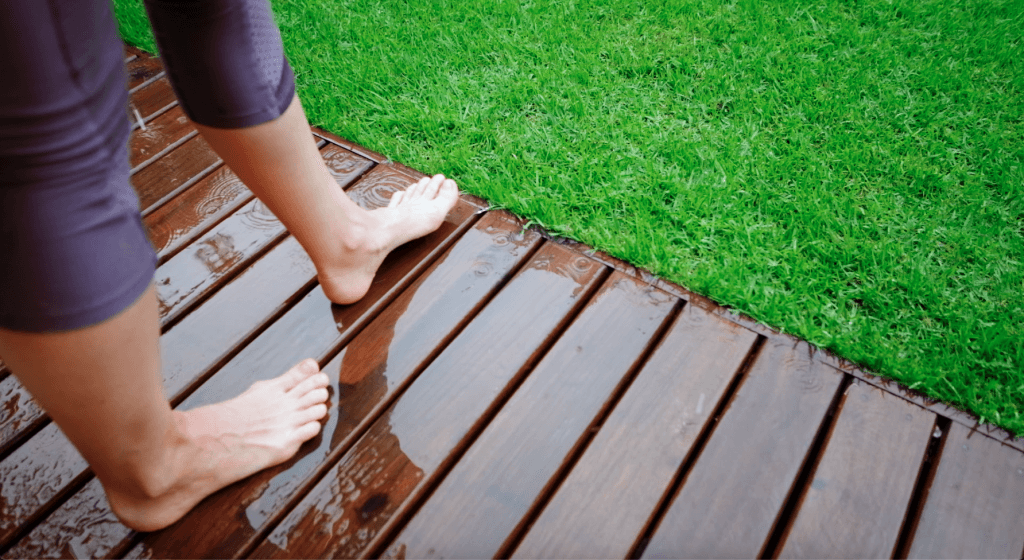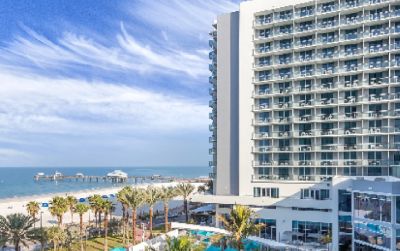
Green building design is all about creating eco-friendly spaces that prioritize sustainability. But safety should also be a key part of the conversation especially when it comes to flooring. Whether in a commercial building or a residential space, ensuring slip resistance is critical for preventing accidents. ANSI A137.1 provides the standard for measuring slip resistance. This helps make sustainable floors both environmentally responsible and safer for everyday use.
ANSI A137.1 and Slip Resistance

ANSI A137.1 is a standard used to measure the coefficient of friction (COF) of hard surface flooring materials. The COF is a value that measures how much friction exists between a person’s shoe and the floor. It determines how slippery a surface may be under different conditions.
This measurement helps in selecting materials that meet specific safety standards, particularly in green buildings where eco-conscious materials are used.
By following ANSI A137.1, designers and builders can ensure their floors maintain high levels of slip resistance. This reduces the likelihood of accidents.
Slip Resistance Matters in Green Buildings?
When designing a green building, choosing sustainable materials is often a top priority. Flooring options like bamboo, cork, or recycled tiles are excellent for the environment. However, their surface textures can vary, making slip resistance a key consideration. That’s where floor slipped testing becomes essential.
For instance, a polished concrete floor may be eco-friendly, but without proper slip testing, it could become a hazard when wet. ANSI A137.1 helps to determine if a floor material is safe enough for spaces that experience a lot of foot traffic or are prone to moisture. By conducting this testing, designers can ensure that their eco-friendly materials also contribute to a safe environment.
Integrating Slip Resistance with Sustainability
Sustainability and safety are not mutually exclusive. The ANSI A137.1 standard helps integrate both into flooring design green building’s flooring system should not only reduce the carbon footprint but also offer a reliable walking surface for occupants. This makes slip resistance testing crucial in selecting materials like recycled tiles or low-emission finishes.
By using the ANSI A137.1 standard, builders can ensure that their sustainable flooring choices meet both environmental goals and safety regulations. This dual focus supports long-term sustainability by minimizing the risk of slips and falls, ultimately reducing liability and maintenance costs.
The Role of Slip Resistance in Outdoor Spaces
Green building design often extends beyond the interior, including outdoor areas that are designed with sustainability in mind. Pathways made from natural stone, porous concrete, or other eco-friendly materials may look beautiful, but they can become slippery when exposed to the elements.
Outdoor surfaces need to meet specific slip resistance standards, particularly in areas like patios, walkways, or rooftop gardens. Floor slippering testing helps ensure these surfaces are safe, even in wet conditions, contributing to the overall success of a sustainable design.
Long-Term Benefits of Slip Resistance in Sustainable Floors
Sustainability isn’t just about choosing the right materials—it’s also about ensuring they last and remain safe over time. By performing regular slip resistance testing according to ANSI A137.1, building managers can identify any potential hazards and address them early. This proactive approach enhances the longevity of sustainable flooring and reduces the need for repairs or replacements caused by slip-and-fall incidents.
Moreover, sustainable floors that pass slip resistance tests require less intervention and contribute to the overall well-being of occupants. This long-term sustainability makes these floors a win for both the environment and the safety of those who use them.
Conclusion
When it comes to green building design, it’s essential to prioritize both sustainability and safety. By using ANSI A137.1 for slip resistance testing, you can ensure that your eco-friendly floors also provide the security needed to prevent slip and fall accidents. Sustainable materials combined with proper slip resistance testing make for a safer, smarter design.
If you’re ready to enhance the safety of your green building project, get in touch with our team at Walkway Management Group for expert slip resistance testing services today!


















